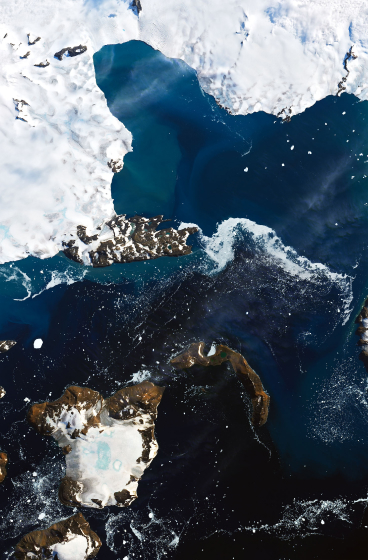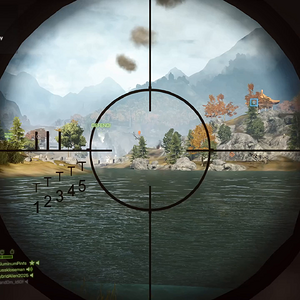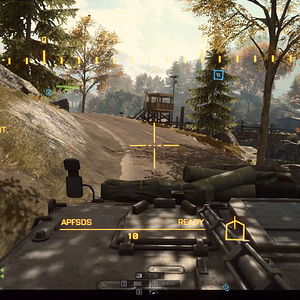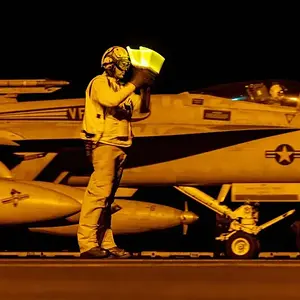NASA
Registered
2 min read

In 2022, nearly 100 large wildland fires burned in the U.S. West. Almost two dozen of those burned Washington and Oregon alone, filling the air with smoke. Plumes from the fires often could easily be seen from space.
Credit: NASA
Globally, nearly all wildfires start with a human ignition source – not lightning strikes or wildlife encountering power equipment. Knowing humans can be a primary cause is an example of the sort of knowledge that helps predict and prevent wildfires, a challenge that NASA and the firefighting industry are undertaking together.
As wildfires become more common in rarely experienced countries like Ireland and are more intense in other areas impacted by climate change, governments and businesses are turning to space for help.
Landsat satellite Earth-observation data, artificial intelligence, and machine learning now predict and monitor fires and support post-fire recovery. San Diego-based Technosylva Inc. provides firefighters with a wildfire monitoring service that combines all these technologies. The company also uses other NASA fire data resources compiled by the agency’s Ames Research Center in Silicon Valley to assist during the fire season and beyond.

Satellite imagery helps Technosylva’s Wildfire Analyst identify areas previously burned by wildfire to eliminate those areas without fuel like leaves or grasses (black circles) and pinpoint areas different types of available fuel (colored circles).
Credit: Technosylva Inc.
Technosylva uses data fusion, which integrates multiple data sources from climate, weather, landscapes, and human infrastructure, to develop a complete picture of current fire risks. Before fire season begins, these efforts help develop more resilient landscapes to make communities safer. During the fire season, models predict how fires will spread, and provide real-time equipment and personnel tracking across vast tracts of land.
During the 2017 Las Máquinas wildfire in Chile – a fire so large the only way to view the perimeter was from space – Technosylva assisted in firefighting efforts by providing satellite data to help identify new hot spots and guided containment efforts.
Read More
Mar 19, 2024

1 min read
On March 23, NASA’s IXPE (Imaging X-ray Polarimetry Explorer) stopped transmitting valid telemetry data. The…
Article 20 hours ago

2 min read
Article 1 day ago

3 min read
Article 2 days ago
Keep Exploring
Missions

Earth Science – Technology

Climate Change

Technology Transfer & Spinoffs

Continue reading...
Preparations for Next Moonwalk Simulations Underway (and Underwater)

In 2022, nearly 100 large wildland fires burned in the U.S. West. Almost two dozen of those burned Washington and Oregon alone, filling the air with smoke. Plumes from the fires often could easily be seen from space.
Credit: NASA
Globally, nearly all wildfires start with a human ignition source – not lightning strikes or wildlife encountering power equipment. Knowing humans can be a primary cause is an example of the sort of knowledge that helps predict and prevent wildfires, a challenge that NASA and the firefighting industry are undertaking together.
As wildfires become more common in rarely experienced countries like Ireland and are more intense in other areas impacted by climate change, governments and businesses are turning to space for help.
Landsat satellite Earth-observation data, artificial intelligence, and machine learning now predict and monitor fires and support post-fire recovery. San Diego-based Technosylva Inc. provides firefighters with a wildfire monitoring service that combines all these technologies. The company also uses other NASA fire data resources compiled by the agency’s Ames Research Center in Silicon Valley to assist during the fire season and beyond.

Satellite imagery helps Technosylva’s Wildfire Analyst identify areas previously burned by wildfire to eliminate those areas without fuel like leaves or grasses (black circles) and pinpoint areas different types of available fuel (colored circles).
Credit: Technosylva Inc.
Technosylva uses data fusion, which integrates multiple data sources from climate, weather, landscapes, and human infrastructure, to develop a complete picture of current fire risks. Before fire season begins, these efforts help develop more resilient landscapes to make communities safer. During the fire season, models predict how fires will spread, and provide real-time equipment and personnel tracking across vast tracts of land.
During the 2017 Las Máquinas wildfire in Chile – a fire so large the only way to view the perimeter was from space – Technosylva assisted in firefighting efforts by providing satellite data to help identify new hot spots and guided containment efforts.
Read More
Share
Details
Last UpdatedMar 19, 2024
Related Terms
- General
- Ames Research Center
- Space Technology Mission Directorate
- Spinoffs
- Technology
- Technology Transfer
- Technology Transfer & Spinoffs
Explore More

1 min read
IXPE Operations Update
On March 23, NASA’s IXPE (Imaging X-ray Polarimetry Explorer) stopped transmitting valid telemetry data. The…
Article 20 hours ago

2 min read
Tech Today: Cutting the Knee Surgery Cord
Article 1 day ago

3 min read
Partnerships that Prepare for Success: The Research Institution Perspective on the M-STTR Initiative
Article 2 days ago
Keep Exploring
Discover Related Topics
Missions

Earth Science – Technology

Climate Change

Technology Transfer & Spinoffs

Continue reading...







